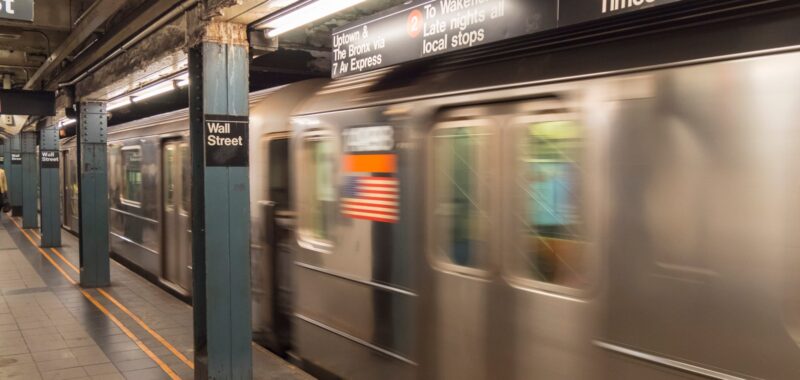NYC subway commuters holding their breaths for good news about the subway’s air quality may want to hold for a lot longer: The pollution levels inside America’s largest metro system are alarmingly abysmal and pose a serious health hazard to riders, according to a new study. The study, published August 7 in PLOS One (a peer-reviewed, open-access journal of the Public Library of Science) found that pollutant levels on NYC subway platforms averaged nearly 10 times the recommended World Health Organization limit. Those inside the trains averaged nearly 7 times that figure.
Furthermore, the study, funded by the US Department of Transportation and led by New York University postdoctoral research scientist Shams Azad, now at the Columbia Climate School, found that poorer, Black, and Hispanic commuters suffered significantly worse exposure than wealthier, white, and Asian commuters. “[S]ocioeconomic factors play a role in shaping the transportation choices of individuals and subsequently impact their exposure to subway driven PM2.5,” the study concluded.
An interactive map shows the air-quality levels at each subway stop in New York City.
By taking air-quality measurements 5 to 15 minutes on the platform on every subway station in Manhattan, Brooklyn, Queens, and the Bronx (no mean feat: the study visited 429 subway stations) and measuring train cabin air quality by taking round-trip rides on 19 subway lines, the researchers found that the average concentration of PM2.5 (particulate matter smaller than 2.5 microns) on subway platforms was 139 μg/m3 (micrograms per cubic meter). On trains, the PM2.5 concentration was 99 μg/m3. WHO recommends that you avoid PM2.5 concentrations higher than 15 μg/m3 more than 3 or 4 days a year.
Photo: Getty Images/Fraser Hall
These fine particles are especially worrying to health officials. PM2.5 particles are so small they stay suspended in the air longer and easily get into the bloodstream when you breathe them in. This kind of air pollution has been linked to a plethora of cardiovascular, respiratory, metabolic, and neurological disorders, and are responsible for the deaths of over 7 million people a year, according to WHO.
Though WHO’s guidelines refer to an average exposure taken over 24 full hours, and a typical commuter obviously doesn’t spend an entire day in the subway system, the researchers said their results could be a useful baseline to understanding how much pollution a typical New York commuter inhale. For example, quick back-of-the-envelope calculations tell us that a New Yorker who spends 30 minutes on the subway to work and 30 minutes to get home for each of the 260 workdays in an average year would be exposed to those high levels of subway pollution for the equivalent of nearly 11 full 24-hour days—significantly above the WHO red flag.
The study also combed census data and combined it with their findings on subway air quality to find out which demographic groups were most affected by bad air. Their findings? On average, people who live in predominantly Black and Hispanic neighborhoods—who generally have longer commutes because there are fewer jobs where they live—face worse daily exposures than people who live in predominantly white or Asian neighborhoods. (For Black commuters, it’s 35% worse than for white and Asians; for Hispanics, 23% worse.)
Photo: Getty Images
There was an income gap, too, with poorer New Yorkers less able to forgo the subway for personal cars, taxis, ride-shares, etc., or simply walking to work because they live close by. “[I]t is evident that the lowest income group in the city, with a median family income between [$]12,000 and 39,000, experiences the highest levels of subway PM2.5 exposure,” according to the study. “As the income level increases, there is a gradual decline in exposure levels until reaching the highest income groups.”

